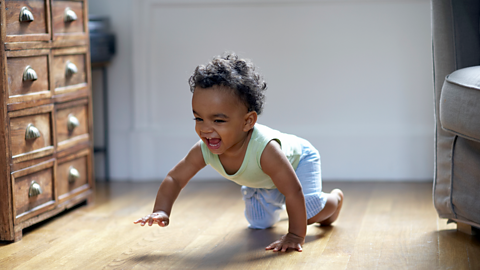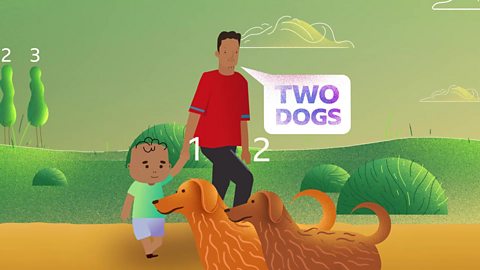Trying to keep up with your child's development - and what's best for them at a certain age or stage - can feel like an impossible task.
They're always learning and growing and it's easy to lose grasp on what certain terms, like 'cognitive development', actually mean for you and your child.
We spoke to lecturer in psychology and language researcher Dr Sam Durrant from to help you make sense of cognitive development, the ideas that surround it, like Piaget's Theory, and some experiments you can try at home to see how your little one's thought processes are developing.
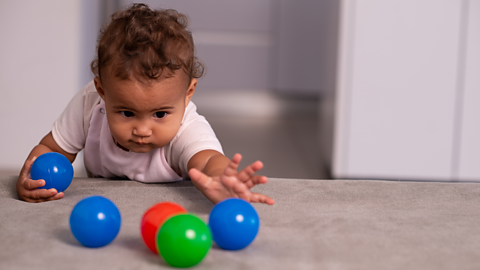
What is cognitive development?
Cognition and cognitive development - the key differences
‚ÄúCognition is the term used to describe the toolkit of skills that individuals (children and adults) can use to take information and knowledge from the environment, or to interact with and use that knowledge,‚ÄĚ Sam explains.
‚ÄúCognitive development describes the process of building up your toolkit, starting with some basic skills, like perception and attention, and then adding new tools over time, like memory and problem solving, or improving and upgrading the tools you already have as the ways you can interact with the environment change.‚ÄĚ
We think of cognitive development as something that happens in childhood and adolescence, but Sam reminds us that our cognition changes throughout our lives. The pre-frontal cortex, the part of the brain where a lot of our cognitive processes happen, isn't fully developed until our mid-to-late twenties.
Stages of cognitive development
Cognitive development is a complex process and happens at different rates for different children.
Sam says, "In those early years, children are building basic perception and attention skills. But then, at around five years old we start to think about higher level more complex abilities like theory of mind, understanding that people have different viewpoints and knowledge to your own."
"It's a spiral - the more skills you get, the more you can develop."
Here are some stages that you can spot in your child during their first five years…
6 - 12 months - Sensory motor stage
This stage is "all about the information that your child gets through their senses, their motor skills and their interaction with objects," says Sam.
An example of development and learning at this stage is when babies put objects in their mouth. "There's lots of evidence that that's because the mouth is really sensitive, they learn a lot about objects and textures this way."
"Lots of parents spend their time taking things out of their child's mouth and telling them, 'don't chew that', but actually it's a really good way for babies to learn about objects as long as this is done safely and with supervision."
9 - 12 months - Object permanence
You might have heard of this one before - it's one of the reasons why babies love peekaboo! Before they develop a sense of object permanence, your child won't understand that things continues to exist once they've stopped seeing, touching or hearing it.
"At four or five months, if your baby drops something off the high chair, they aren’t going to look for it. But by the time they reach 9 to 12 months, they'll look over the edge to see where it has gone," Sam says.
"Or, if they see the cat leave the room, they might start to look for the cat, or if they're crawling, chase it out of the room. This tells us that they have started to understand that even when they can't see the cat anymore, it still exists."
12 - 18 months - Functional use of objects
You might notice this stage when watching your child play with a toy, or something they've found around the house. As well as exploring objects and figuring out their motor skills, your child will start to copy you and use objects for their intended purpose.
Sam explains, "So they might press a button on a toy phone to make it light up, or hold it to their ear, because they've learned that association through observing what others do with those objects.‚ÄĚ
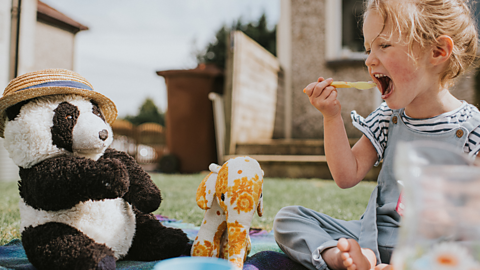
2 - 5 years - Mental representations
This is when your child's imagination really starts to take hold. At this stage, children start to develop ideas of objects in their mind that don't require the object to be there in front of them. For example, if you say the word 'dog', they might be able to conjure up the image of a dog in their head, which they aren't really doing before the age of two.
"This means that they can start to engage in imitation and pretend play. So, they will be able to give you a cup and pretend there's a cup of tea in there because they've got this mental representation of what goes in a cup. They will also want you to play along," Sam says.
She also explains that this is the stage when children might develop fears of imaginary monsters under the bed or in the wardrobe - these are mental images too. If you find yourself in this situation, Sam has some advice…
"Trying to explain to them, 'Look, there's nothing under the bed' and showing them the reality is probably going to be less effective than saying something like, 'Well, here's my imaginary monster spray and if we spray this under the bed the monsters will go away.'"
"They're much more likely to respond to that similar level of imaginary solution, than trying to appeal to their logic, which they haven't really developed yet."
Piaget’s Theory of Cognitive Development
Jean Piaget was a Swiss psychologist who suggested that there were four stages of cognitive development in childhood. These stages are…
1. Sensorimotor stage - 0-2 years old
2. Preoperational stage - 2-7 years old
3. Concrete operational stage - 7-11 years old
4. Formal operational stage - 12 years old+
Two stages occur before your child turns five: the sensorimotor and preoperational stages
The sensorimotor stage is a time when your child is largely experiencing the world through their basic senses and motor responses. For example, how objects feel and what they can see and hear around them.
However, more abstract skills like object permanence also develop at this stage, as well as the building blocks of language.
The preoperational stage sees language become a more important part of your child's experience. You can learn lots more about language development in our Child Development collection..
Being able to represent objects in their mind is another key part of the preoperational stage and, as a result, you might see them taking part in pretend play.
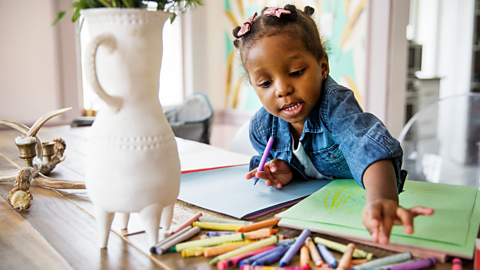
Despite being over 70 years old, Piaget's theory is "still one of the prevailing theories in terms of cognitive development," Dr Sam Durrant explains.
"It still features in my teaching to the speech and language therapy students I work with."
But it isn't without its limitations, the biggest being that, according to Sam, it's "quite culturally biased" as Piaget based his theory on observations of his own daughter and nephew and is focused on views from the Western world that may not be appropriate for all cultures.
Sam also suggests that Piaget's theory underestimates the abilities of children, with more recent evidence showing that some skills develop in children much earlier than Piaget's stages suggests. This is partly down to the limitations of 1950s technology.
"For example, when testing object permanence, researchers are now using eye trackers where we can see in real time how long a baby looks at something and what they are looking at. Using this new technology, it has been shown that babies have some understanding of object permanence at around 5 or 6 months."
Examples of cognitive development to recognise at home
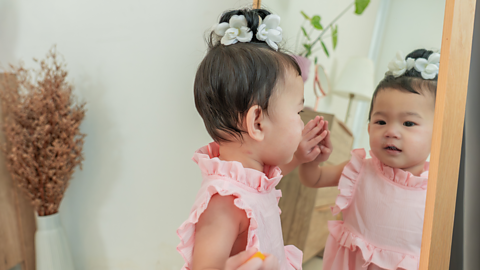
- Object permanence
When your child understands that something continues to exist once they stop sensing it - so if a pet leaves the room, they might follow it with their eyes, or crawl out of the room after it! Children don't generally develop much sense of object permanence until they are over six months old.
- Attention
When your child reaches 9-12 months old, you may find them starting to follow when you look or point at something.
- The A not B error
In this example, if you hide an object under a blanket or box, then move it to a second blanket or box, your child will look for the object in the original hiding spot. This is a common mistake for children under 12 months old.
- Symbolic play
This is when children start to engage in imaginative play. For example, making tea in an empty cup, or feeding a doll with a bottle. You might start to see the early signs of symbolic play at one to two years old.
- The mirror test
The ability to recognise themselves in a mirror shows self-awareness. Children tend not to be able to do this below 18 months old.
- Memory
You can watch your child's memory develop with games like matching pairs, or the shopping list game - we have some Tiny Happy People memory activities here. Sam says that you can see these changes best after the age of two to three years old.
- Drawing
While your child might use pens and colouring pencils beforehand, Sam says that drawings representing objects typically starts at around three to four years old. This is linked to the ability to hold mental representations of objects and develop abstract thinking.
- Theory of mind
In short, 'theory of mind' is the understanding that other people know different things to you. You may have noticed that toddlers don't often have this knowledge - thinking you know all the things that they know. They develop this at around three to five years old.
- Inhibition
This is a part of what experts call 'executive functioning' - a set of skills that allow you to manage your own behaviour. Inhibition involves controlling our automatic urges, so you can see this develop using games like Simon Says, or Teddy Says at around three to five years old.
Cognitive and language development
According to Sam, language and cognitive development are intrinsically linked. One feeds into the other.
"It’s not a coincidence that children start to develop mental representations at age two, when they're starting to combine words into multi-word sequences."
"These two abilities, cognition and language, are working together. Initially, we see young children use speech to think out loud - they haven't got that inner voice.
"Parents will see their child kind of chattering away to themselves but as they develop this starts to fade and this speech becomes internalised."
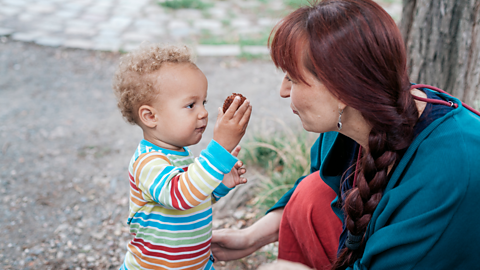
Supporting cognitive development
Sam says the main thing parents can do to support their child's cognitive development is "provide them with a range of experiences". Allow your child to be curious and explore the world around them as freely as possible, while staying safe. And support their language development as much as you can. It's all linked together!
"Language isn't a path on its own. Language needs cognitive skills. It needs you to be able to have motor skills to produce sounds and explore the environment. It needs you to be able to do so many other things."
"My colleague, Dr Caroline Rowland, refers to it as a virtuous spiral. Put more simply, the more skills you learn in one area, the more opportunities to learn in another area, which then supports that first area to develop further.
"This means that these skills and abilities children are developing feed into each other."

